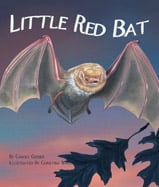Alignment to Standards for TN

| Grade | Number | Standard |
|---|---|---|
| 1 | SC-1.1.2. | Recognize that smaller parts of living things contribute to the operation and well being of entire organisms. |
| 1 | SC-1.2.3. | Examine interrelationships among plants, animals, and their environment. |
| 1 | SC-1.5.2. | Recognize that living things have features that help them to survive in different environments. |
| 1 | SC-1.7.2. | Recognize that there are predictable patterns which occur in the universe. |
| 1 | SC-1.8.1. | Recognize daily and seasonal weather changes. |
| 1 | SC-1.8.1.b | weather patterns associated with the seasons. |
| 2 | SC-2.4.1. | Recognize that living things reproduce. |
| 2 | SC-2.4.1.a | Recognize that all living things come from other living things. |
| 2 | SC-2.4.3. | Recognize that the appearance of plants and animals changes as they mature. |
| 2 | SC-2.4.3.a | Recognize that as an organism grows, its appearance may change. |
| 2 | SC-2.5.2. | Recognize that living things have features that help them to survive in different environments. |
| 2 | SC-2.7.2. | Recognize that there are predictable patterns which occur within the universe. |
| 3 | SC-3.2.3. | plants and animals depend upon each other and the non-living elements of an environment to meet basic needs. |
| 3 | SC-3.2.3. | Examine interrelationships among plants, animals, and their environment. |
| 3 | SC-3.4.1. | Recognize that living things reproduce. |
| 3 | SC-3.4.3. | Recognize that the appearance of plants and animals changes as they mature. |
| 3 | SC-3.4.3.a | Describe how an organism (e.g., frog, butterfly) changes as it matures. |
| 3 | SC-3.5.2. | Recognize that living things have features that help them to survive in different environments. |
| 3 | SC-3.7.2. | Recognize that there are predictable patterns that occur in the universe. |
| 3 | SC-3.8.1. | daily and seasonal weather changes. |
| 4 | SC-4.3.1. | Realize that plants and animals use food for energy. |
| 4 | SC-4.3.1.a | Explain that animals must obtain and use food for energy. |
| 4 | SC-4.4.3.a | Describe the life cycle of an animal (i.e. frog, mealworm). |
| 4 | SC-4.5.1. | Realize that plants and animals can be grouped according to similarities and differences in their characteristics. |
| 4 | SC-4.5.1.a | Classify animals, by type, according to their characteristics. |
| 5 | SC-5.2.1.a | Classify specific kinds of relationships among plants and animals within an ecosystem. |
| 5 | SC-5.3.1. | Realize that plants and animals use food for energy. |
| 5 | SC-5.3.2. | Recognize the function of specific structures in organisms that allow them to obtain and use energy. |
| 5 | SC-5.4.1. | Realize that certain characteristics are passed from parents to offspring. |
| 5 | SC-5.4.2.b | Explain that the continuation of a species is dependent upon the reproduction of its members. |
| 5 | SC-5.5.1. | Realize that plants and animals can be grouped according to similarities and differences in their characteristics. |
| 5 | SC-5.5.2. | Determine that adaptations help organisms to survive in their environments. |
| K | SC-K.12.1. | Recognize that objects have observable properties that can change over time and under different conditions. |
| K | SC-K.5.2. | Recognize that living things have features that help them to survive in different environments. |
| K | SC-K.5.2.a | Know that different organisms tend to be found in different environments. |
| K | SC-K.8.1. | Recognize daily and seasonal weather changes. |
| K | SS-K.3.02. | Recognize the interaction between human and physical systems around the world. |
| K | SS-K.3.02.c | Describe seasons. |